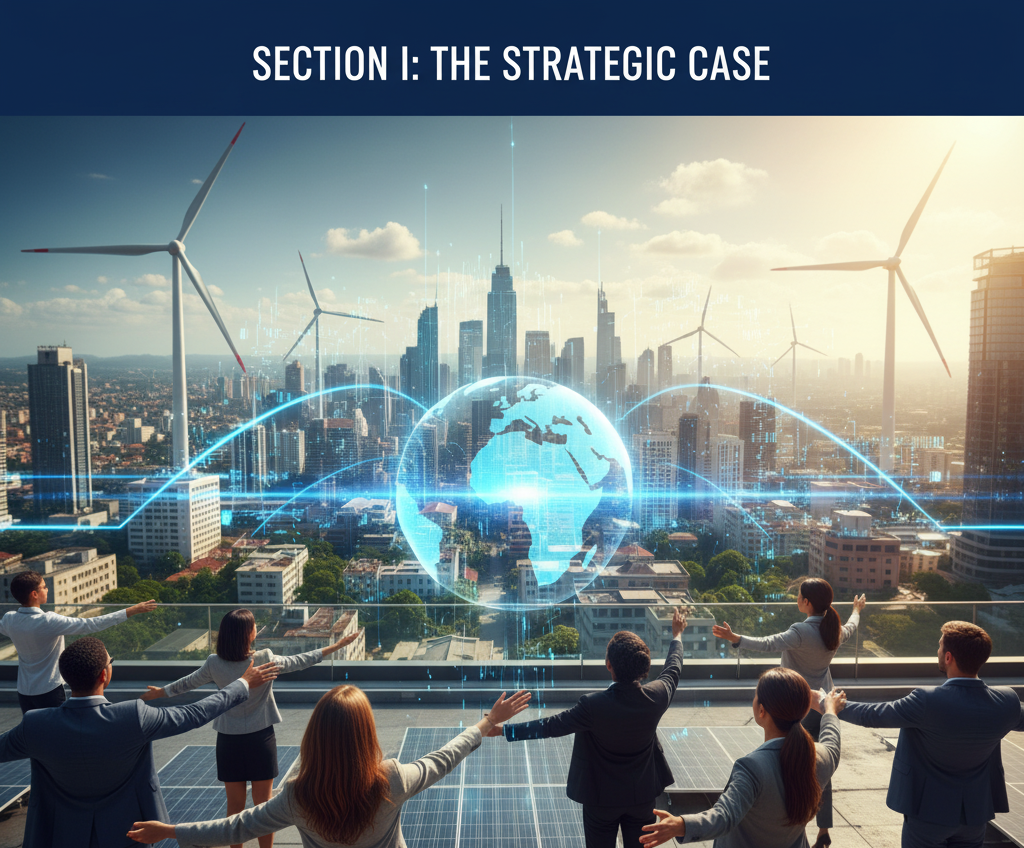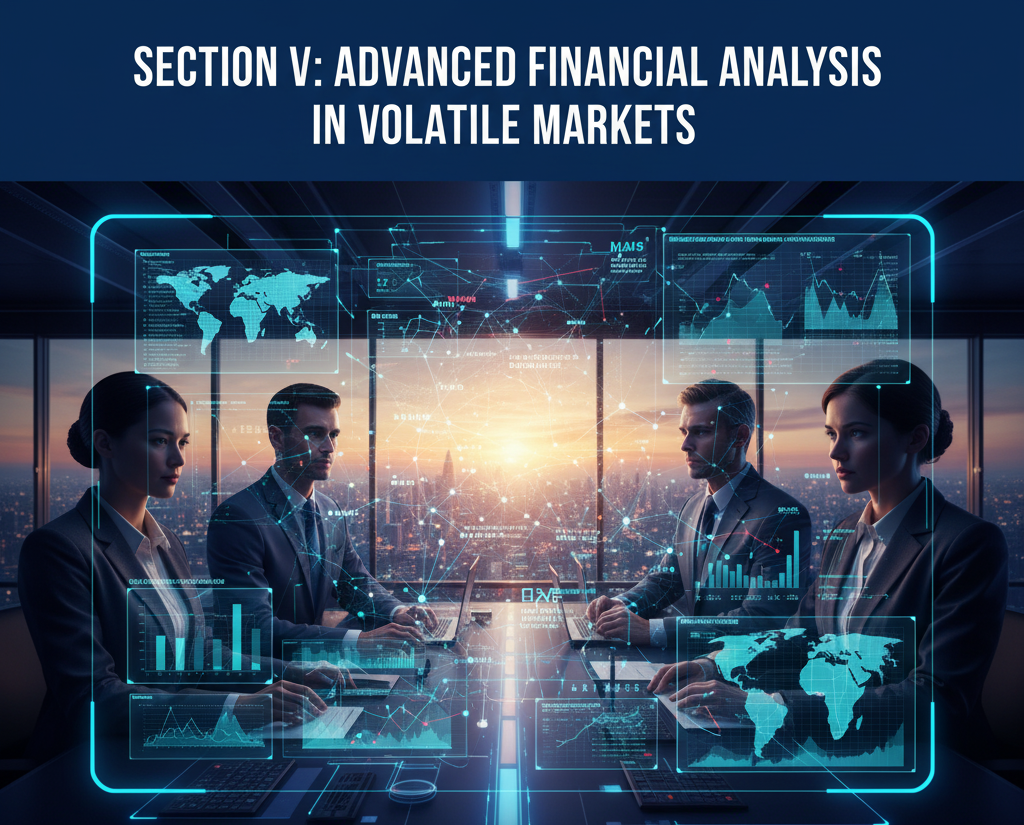The global energy transition hinges critically on Emerging Markets and Developing Economies (EMDEs). These regions hold the key to achieving global climate goals while securing affordable, reliable energy for billions. We argue that the future clean energy market forecast is not located in the saturated West, but in the Global South. Data indicates that 85% of the world’s additional electricity demand by 2035 will originate here. Yet, a massive disconnect exists.
Currently, these regions attract less than 15% of global financing. This is not just an oversight; it is a failure of cognitive anchoring by global capital. However, this structural gap presents the decade’s most significant opportunity. By analyzing the data, we can clearly see why emerging markets will dominate clean energy investment: the math of demand creates an irresistible gravity for capital. Unlocking this requires a rigorous focus on de-risking mechanisms and advanced valuation methodologies.
Section I: The Strategic Case: Why Emerging Markets Will Dominate Clean Energy Investment

1.1. The Criticality of the Global South in the Energy Transition
EMDE economies are not merely consumers; they are the engine room of the future. They are vital to securing a sustainable trajectory, even as they battle severe energy poverty. Consider the demographics: all 775 million people globally lacking electricity reside within EMDEs. While clean tech offers cost-effective solutions, demand in these regions is outpacing clean capacity deployment.
Under current policies, one-third of the rise in EMDE energy use over the next decade will still rely on fossil fuels. This reality underscores the urgency. The Global South will account for the overwhelming majority of future demand growth. Consequently, strictly adhering to a data-driven strategy explains why emerging markets will dominate clean energy investment. Even amidst geopolitical tensions, capital flows to the energy sector are projected to hit USD 3.3 trillion in 2025. This momentum creates a policy window to divert investment toward areas of greatest need.
1.2. Analysis of Investment Concentration and Allocation Disparity
A detailed audit of global ESG investment reveals a profound concentration risk. EMDEs currently attract about USD 770 billion annually in clean energy. However, global allocators distribute this capital unevenly. The People’s Republic of China absorbs two-thirds of this total. The top three—China, India, and Brazil—account for nearly 75%.
This concentration exposes a flaw in capital allocation. Funds are optimizing for lower perceived execution risk rather than maximizing development impact.
Diametrically opposed to this consolidation is the bifurcation of policy. In Southeast Asia, 97% of Chinese climate-related funds target hard infrastructure like hydropower. Flipping the risk profile, financing from the US prioritizes soft infrastructure: governance reforms and institutional capacity. Projects reliant on Chinese capital gain speed but suffer political volatility. Those backed by Western Development Finance Institutions (DFIs) face slower deployment but gain systemic stability. This creates a vacuum in Africa, which remains dependent on concessional funding to bridge the gap and validate why emerging markets will dominate clean energy investment.
Section II: Deconstructing the EMDE Risk Premium: Barriers to Mobilizing Private Capital
2.1. The Financial Impact of High Risk
The single greatest obstacle to mobilizing private capital is the amplified renewable energy investor risk. This premium forces the cost of capital for utility-scale solar projects in key emerging economies to be $2x$ to $3x$ higher than in advanced counterparts. Without structural support, this burden renders clean energy projects economically insolvent.
Three vectors drive this cost:
- Country and Governance Risks: Political fragility and scenarios that erode investor confidence.
- Sectoral and Regulatory Risks: Inconsistent policies, such as shortened qualification windows, which decimate project timelines.
- Financial and Currency Risks: Inconvertibility and transfer risks that directly impact the IRR.
This barrier acts as an implicit subsidy for incumbent fossil fuels. De-risking must prioritize reducing this premium to achieve cost parity. Only then can we prove why emerging markets will dominate clean energy investment.
2.2. Structural Constraints of Local Financial Ecosystems
Transcending immediate project risks, local market weaknesses exacerbate the challenge. Many EMDEs suffer from shallow capital markets, restricting long-tenor debt instruments. Furthermore, commercial banks dominate the landscape. Their focus often excludes the “patient capital” required for infrastructure.
Additionally, high transaction costs deter institutional players. Energy efficiency and distributed generation projects are often “bespoke.” Institutional investors demand standardized, aggregated assets. They avoid portfolios of small, individualized projects due to management friction.
2.3. The Structural Misalignment in Traditional Investment Models
Conventional markets are systemically ill-suited for high-risk EMDEs. Private capital demands co-investment structures to support “untested technologies.” This reluctance structurally excludes innovation from frontier markets.
Ergo, the market dictates the need for blended finance. These structures must serve a dual purpose: hedging against sovereign risk and functioning as a market discovery vehicle. By offering first-loss protection, blended finance allows private institutions to validate financial models in challenging environments. This validation is the precursor to understanding why emerging markets will dominate clean energy investment.
Section III: Mobilizing Private Finance: Proven De-risking Mechanisms

3.1. Policy and Regulatory Foundations for Scale
Mobilizing private investment requires a policy environment that translates volatility into bankable assets. Consistency is paramount. Project aggregation and standardized procurement are proven strategies. Standardization reduces the bespoke nature of financing, allowing institutional capital to flow into aggregated portfolios.
3.2. Structured Blended Finance and Concessional Funding
Blended finance effectively bridges the gap between risk appetite and project reality. Interventions using concessional funding for de-risking—such as first-loss equity—demonstrate high efficacy. The leverage effect is substantial, often yielding positive ratios from $3:1$ to $7:1$ of commercial finance for every concessional dollar. Analysis confirms that Africa requires the largest share of this funding. Targeting high-risk regions yields the greatest leverage potential.
3.3. Mitigation of Off-taker and Political Risk via Guarantees
In EMDEs with negative risk perception, state-backed guarantees are vital shields. They mitigate risks private investors cannot model:
- Off-taker Credit Risk: Covering non-payment by state-owned utilities.
- Political Risk: Protecting against unilateral tax changes or PPA termination.
- Financial Transfer Risk: Ensuring foreign investors can repatriate returns.
Innovative instruments, such as volume-firming agreements, are now reducing reliance on direct sovereign balance sheets. These tools are essential components in the thesis of why emerging markets will dominate clean energy investment.
Section IV: Investment Segmentation: Utility-Scale vs. Distributed Energy
4.1. Scaling Utility-Scale Renewables
Utility-scale projects remain critical for national decarbonization. Success requires competitive auctions and long-term PPAs. However, these assets are highly vulnerable to sovereign risk. Regulatory exposure ties utility-scale assets directly to the stability of the central government.
4.2. The Consumer-Led Revolution (Distributed PV)
In contrast, distributed generation is experiencing accelerated expansion. It accounts for 42% of projected worldwide PV expansion.
This growth is fueled by EMDE realities:
- Cost Avoidance: High retail prices incentivize consumers to install solar PV to reduce bills.
- Resilience Necessity: In countries with unreliable grids (e.g., South Africa), distributed solar provides essential resilience.
4.3. The Strategic Role of Distributed Energy
Utility-scale investment is exposed to sovereign risk. Distributed energy, conversely, relies on aggregated consumer credit risk. It bypasses the central utility. This characteristic makes distributed generation a potentially lower risk-adjusted return pathway. It explains why emerging markets will dominate clean energy investment from the bottom up. Investors must broaden their focus beyond conventional assets to capture this shift.
Section V: Advanced Financial Analysis in Volatile Markets

5.1. Specialized Valuation Methodologies
Valuing infrastructure in emerging markets requires abandoning basic models. The market is willfully ignoring the inadequacy of standard Discounted Cash Flow (DCF). To accurately assess green tech stock valuation in these regions, we must adapt:
- DCF with Country-Specific Risk Premiums (CSRP): We must explicitly incorporate CSRP into the WACC to price systemic political volatility.
- Real Options Analysis (ROA): ROA values management’s flexibility to defer or expand projects in response to policy changes.
- Adjusted Net Asset Value (NAV): This approach adjusts asset values based on current market risk, addressing potential expropriation.
5.2. Next-Generation Risk Intelligence
DFIs face continuous volatility. Artificial Intelligence (AI) is emerging as a transformative mechanism for risk diagnostics. We propose the Smart De-Risking Model. This AI-driven architecture integrates predictive analytics and macro-political monitoring.
AI reduces information asymmetry. It lowers the perceived risk barrier in opaque markets. This technological edge will enable DFIs to deploy high-leverage funds where the potential for catalytic investment is highest.
Section VI: Conclusion and The Roadmap to Mobilizing Capital
The imperative to channel capital into EMDEs is undeniable. The primary challenge is the structural misalignment regarding risk. However, the sheer scale of demand dictates the outcome. This is why emerging markets will dominate clean energy investment over the coming decades.
6.1. Strategic Recommendations
Policy makers must prioritize “soft infrastructure”—governance reform and transparency. These reforms lower the baseline Country-Specific Risk Premium. Furthermore, MDBs must mandate high-leverage metrics ($3:1$ to $7:1$) as core performance indicators.
6.2. High-Conviction Investment Focus Areas
For private investors seeking the future of emerging economies, the path is clear.
- Resilience Focus: Allocate capital to distributed PV in grid-unstable areas to bypass sovereign risk.
- Rigorous PPA Protection: Demand sovereign guarantees for utility-scale debt.
- Mandatory Valuation Discipline: Reject simplified modeling. Insist on CSRP-adjusted DCF and ROA.
By adopting these strategies, investors position themselves at the forefront of the inevitable. They align their portfolios with the mathematical certainty of why emerging markets will dominate clean energy investment.





Leave a Reply